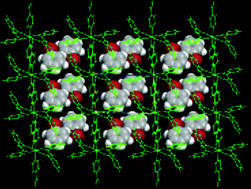Controlling molecular and supramolecular structure of hydrogen-bonded coordination compounds†
Abstract
In order to organize and assemble a variety of octahedral coordination complexes into infinite 1-D chains of desired connectivity,

- This article is part of the themed collection: New Trends in Crystal Engineering

 Please wait while we load your content...
Please wait while we load your content...